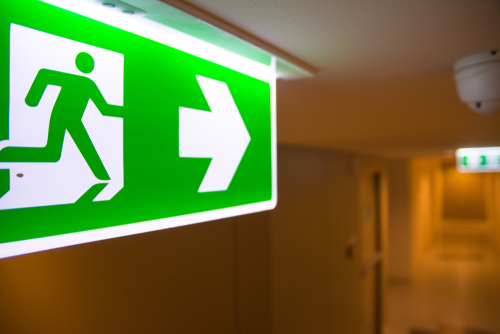Emergency lighting, an often neglected aspect of fire safety, has the power to save lives. By helping occupants locate an exit in the event of power outage and exit quickly.
Correct installation of emergency lights requires professional advice and strict adherence to protocols. In many instances, qualified electricians should be involved.
Types
Emergency lights are designed to function during power interruptions by using backup sources such as batteries. This ensures they remain illuminated during an outage, helping people find safety quickly while avoiding panic.
Modern emergency lights rely on LEDs for illumination, selected for their energy efficiency and long lifespans. Rechargeable battery packs store electricity to power them during a power outage; control circuitry detects any loss of main power to activate their backup system when required. Durable, weather-resistant housing protects internal components from damage.
Emergency lights come in many varieties to meet different space-specific requirements and compliance rules. For instance, high occupancy spaces might need continuous systems while lower occupancy areas might do better with non-maintained emergency lights.
Some models are specifically tailored to integrate seamlessly into a lighting setup, making the fixtures easier to spot in an overall scheme and easy to identify. They also allow greater customization, with adjustable voltage, wattage, battery capacity and remote head configuration options to suit every preference. Stainless steel emergency lights with lower resistance are great choices to minimize voltage drop across long wire runs; plus they feature automatic self-test and AS2293 compliance functions for testing purposes as well as record keeping purposes.
Installation
Establishing an emergency lighting system takes careful planning, preparation and attention to every detail. By seeking professional guidance and adhering to recommended procedures, building owners can build a comprehensive setup that improves compliance and safety during power outages or emergencies.
Begin by conducting an assessment of your building layout to identify areas requiring illumination, such as exit routes, stairwells and corridors, large open spaces or exit routes for emergency purposes. After identifying these critical spots, gather all of the tools and materials required – basic tools could include screwdrivers, wire strippers, electrical tape and voltage testers – before commencing installation.
Switch off the power source in order to protect against electrical hazards, and carefully connect each emergency light fixture using its color-coded instructions from its manufacturer. After connecting all wiring, securely mount each fixture by either using mounting brackets or by drilling holes into wall studs for screws.
Maintenance emergency lights rely on regular power sources to remain illuminated at all times, while non-maintained emergency lighting only activates during power outages or fires. Select an operation type that best meets your needs and building layout.
Maintenance
Regular testing and maintenance of emergency lighting systems is vital in order to ensure their effective functioning in case of power outage, as this is required by building codes and regulations and it can help people navigate safely during evacuations, minimising confusion while providing clear indication that escape routes remain accessible.
Emergency lights are typically designed to operate for at least 90 minutes when mains electricity is cut, giving sufficient time for people to either leave a building safely or wait until power has been restored.
Battery replacement should be carried out regularly to ensure it has enough capacity to power your light for its required duration. Following manufacturer guidelines is best. Some luminaires offer easy battery changes while other may need dismantling in order to gain access to its compartment for replacement.
Clean diffusers regularly to avoid dirt accumulation that could reduce light output intensity, check light bulbs or LEDs for burn-out, and test systems periodically to verify they will activate in an emergency power failure situation and log all results accordingly.
Safety
Emergency lighting can be an essential safety tool when installed correctly, providing escape routes in case of disasters such as fires or earthquakes, while also directing rescue efforts by first responders and firefighters directly to its source.
Emergency lighting can be found in various settings, including schools, office buildings, warehouses and shopping malls. To ensure full compliance, it’s essential that you are familiar with all applicable codes and precautions associated with this form of illumination; for instance NFPA 101 Life Safety Code mandates sensor-equipped fixtures have specific fail-safe modes and delays that ensure continuity of illumination during power transitions.
Proper emergency lighting testing is also crucial. Monthly 30-second tests using the manufacturer’s procedure should be conducted, typically by turning off main power source with fuse or circuit breaker, with annual 90-minute tests conducted to verify it will remain functional during a power failure event.
Recordkeeping of emergency light tests is also key, and should include keeping a logbook with an emergency light tests section to easily reference which lights need to be looked at, when they were last tested, and their test results.

